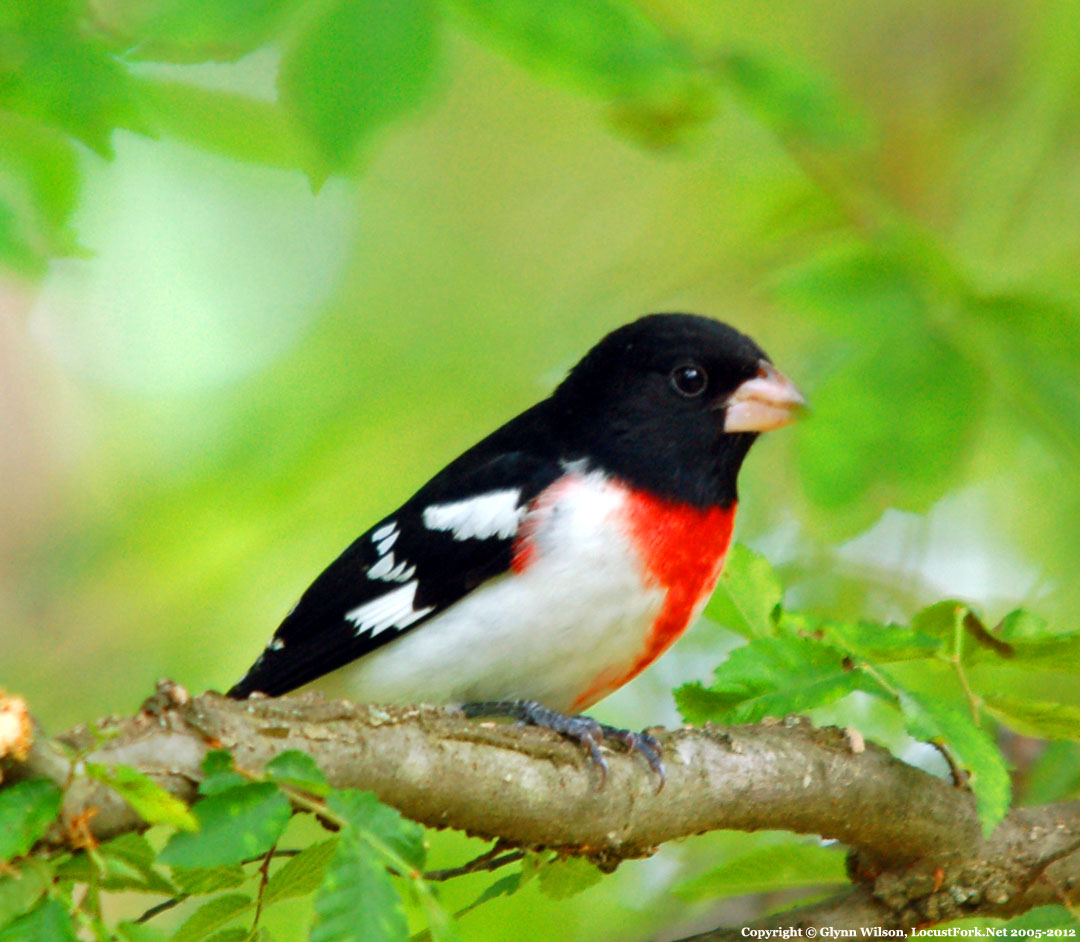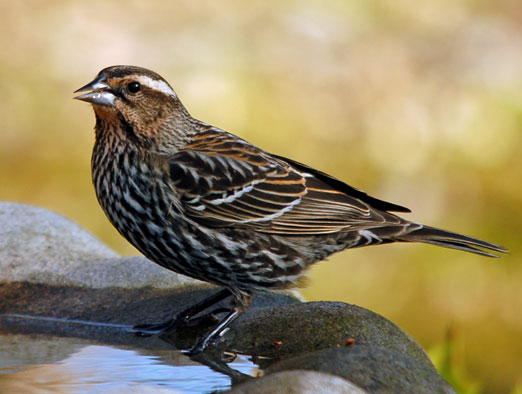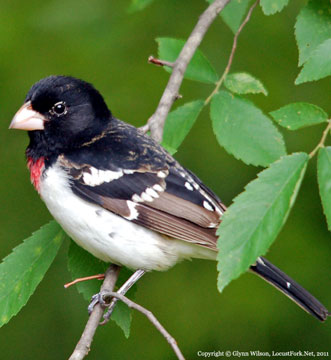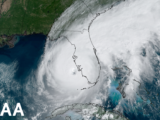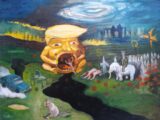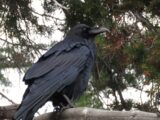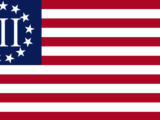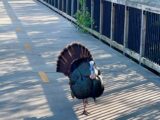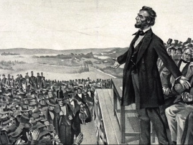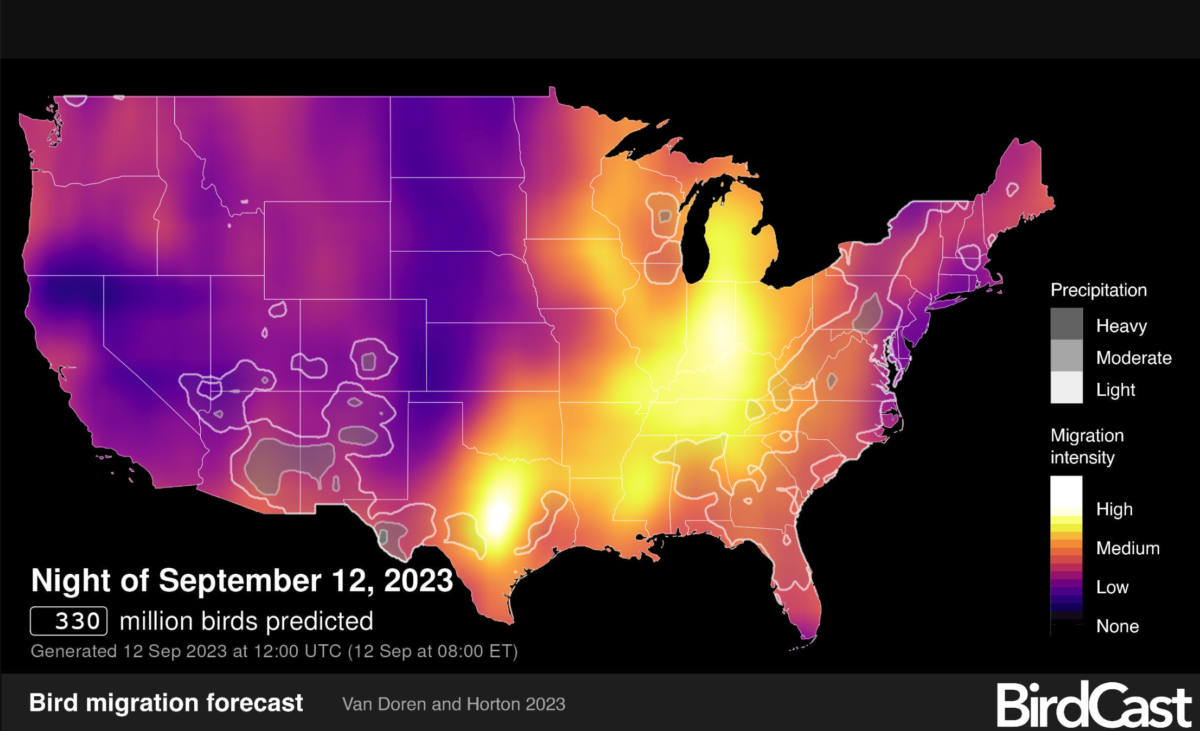
BirdCast, migration forecast map; generation date and time: Cornell Lab of Ornithology and Colorado State University
Staff Report –
WASHINGTON, D.C. — A major fall bird migration will begin on the evening of Tuesday, Sept. 12, according to the Cornell Lab of Ornithology bird cast.
“Bird migration forecasts show predicted nocturnal migration 3 hours after local sunset,” they say in an email blast.
Their forecasts come from models trained on the last 23 years of bird movements in the atmosphere as detected by the US NEXRAD weather surveillance radar network. The models we use the Global Forecasting System (GFS) to predict suitable conditions for migration occurring three hours after local sunset.
These maps also show precipitation forecasts (outlined and shown in grayscale). Note, areas forecast to experience precipitation and bird migration may overlap, and predictions for migration intensity may be highly variable in these locations.
Colorado State University and the Cornell Lab of Ornithology currently produce these forecasts. Leon Levy Foundation, Edward W. Rose Postdoctoral Fellowship, and the Marshall Aid Commemoration Commission supported this research, with additional support from University of Massachusetts Amherst and University of Oklahoma.
The BirdCast project was created with grant awards from the National Science Foundation and subsequently supported by awards from Leon Levy Foundation.
Migratory Bird Photos
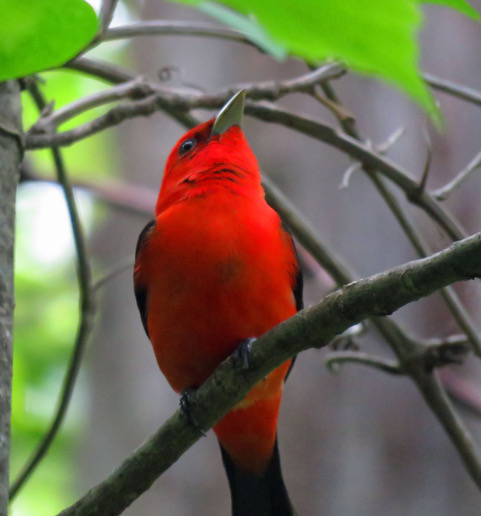
A rare, scarlet tanager flew across the trail in front of me in Shenandoah National Park, and landed just long enough to get this one shot: Glynn Wilson
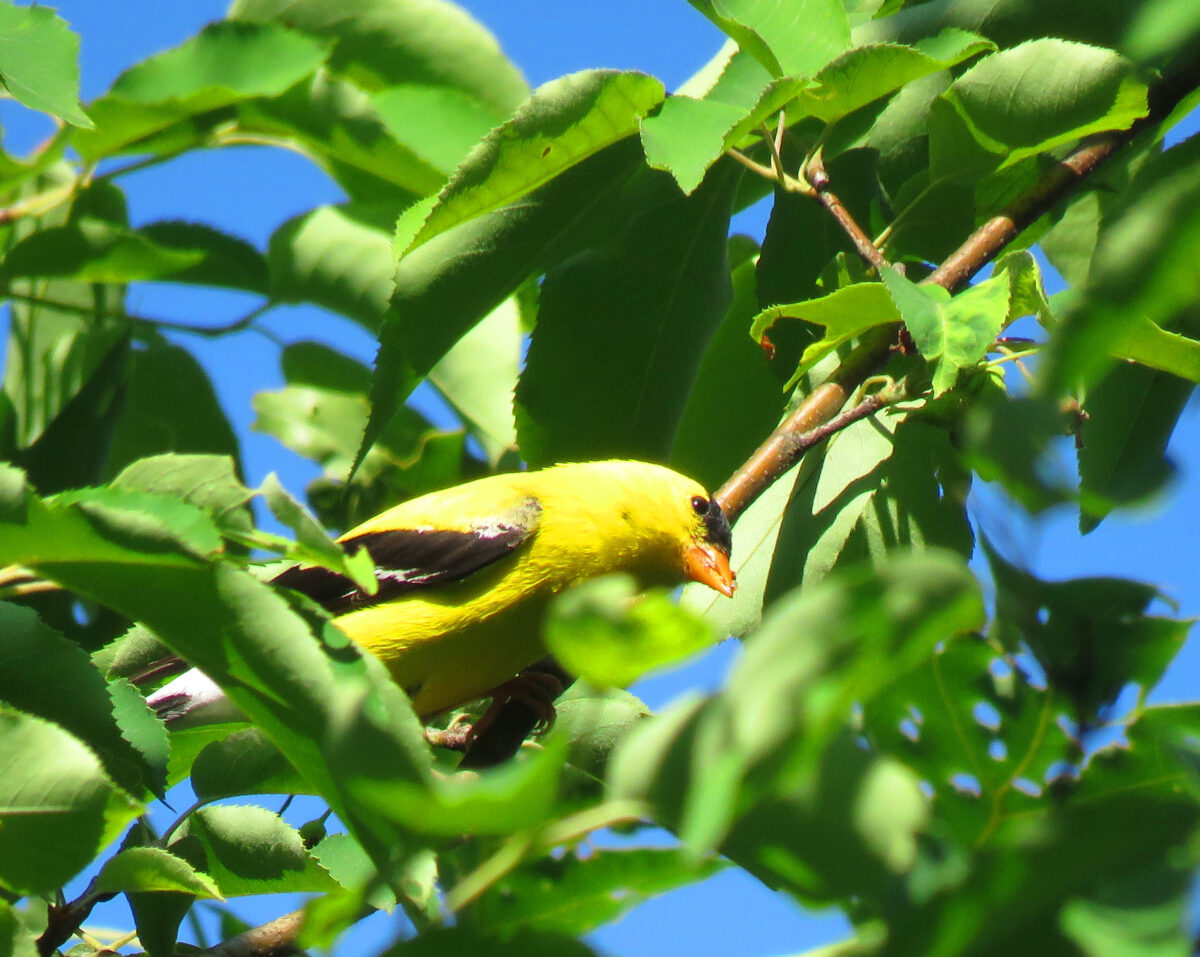
An American goldfinch [Spinus tristis] migrating through Shenandoah National Park in June, 2021: Glynn Wilson
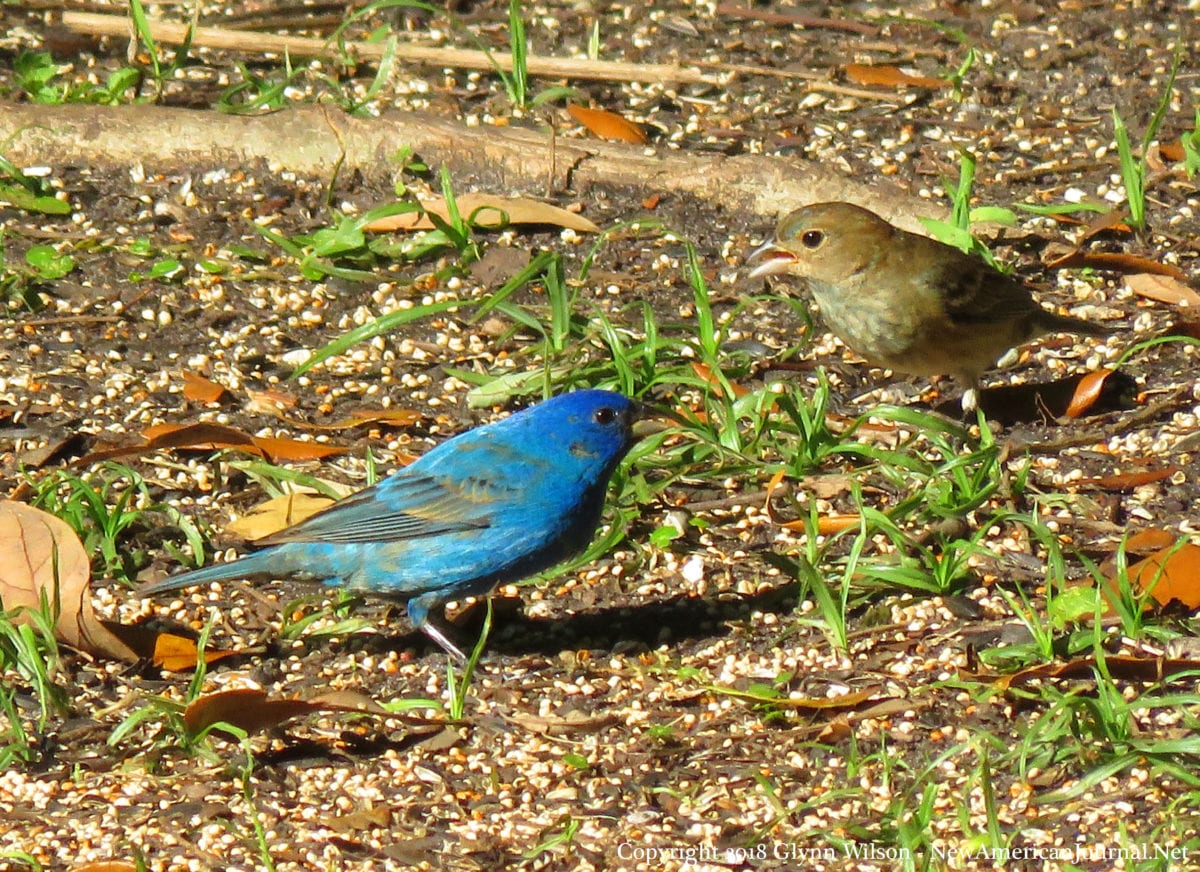
A male and female Indigo bunting [Passerina cyanea] in Dauphin Island’s Shell Mound Park. Photo by Glynn Wilson
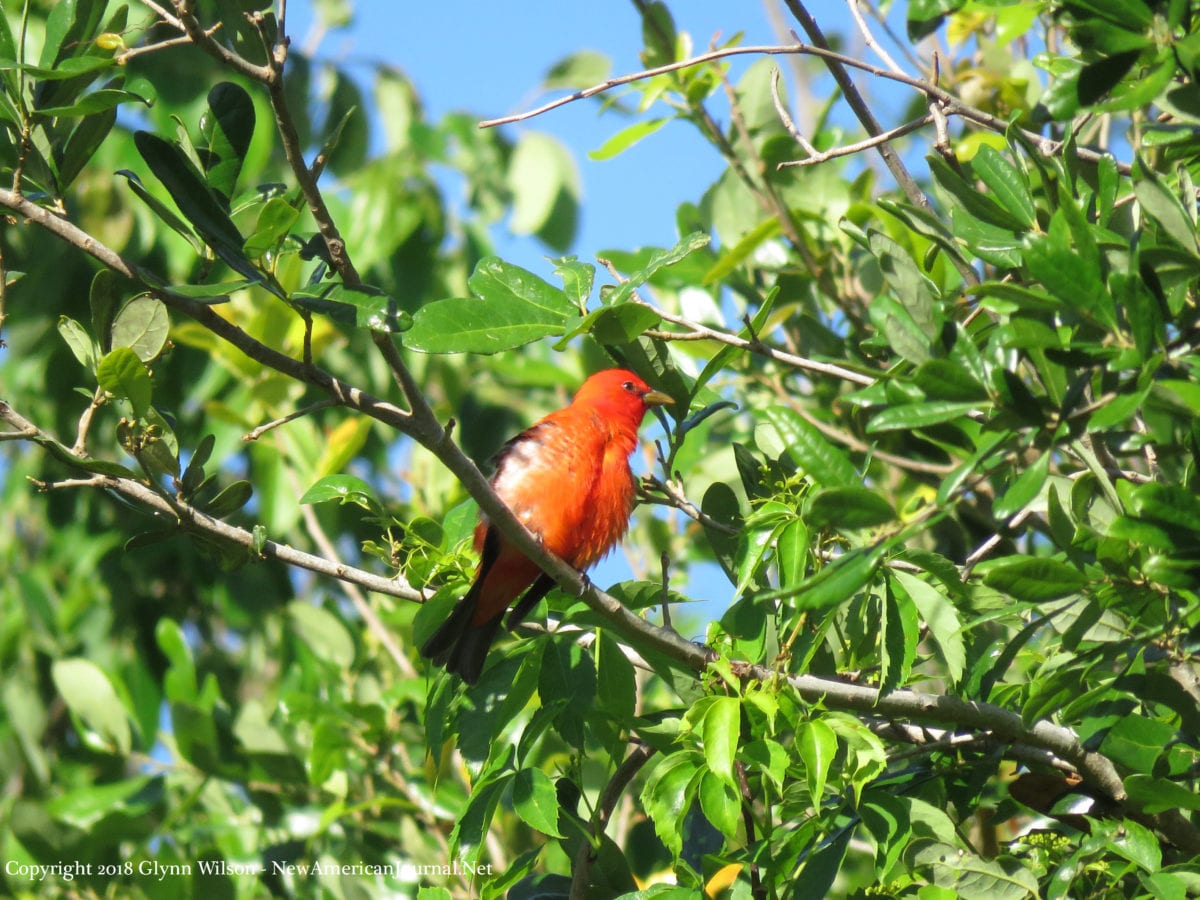
A summer tanager [Piranga rubra] migrating through Dauphin Island’s Shell Mound Park. Photo by Glynn Wilson

An Indigo bunting [Passerina cyanea] in Dauphin Island’s Shell Mound Park. Photo by Glynn Wilson
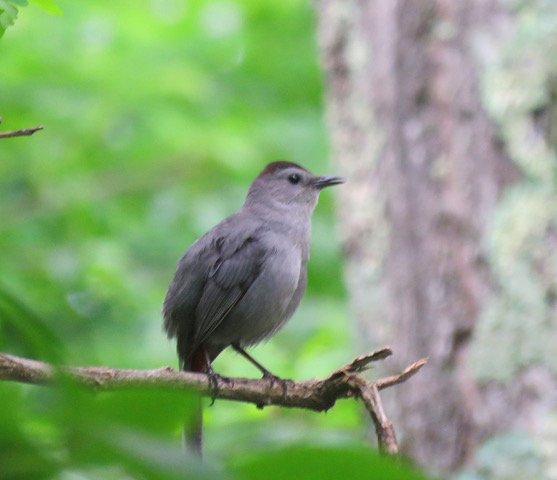
A gray catbird [Dumetella carolinensis] chirping in a campground in Shenandoah National Park: Glynn Wilson
___
If you support truth in reporting with no paywall, and fearless writing with no popup ads or sponsored content, consider making a contribution today with GoFundMe or Patreon or PayPal. We just tell it like it is, no sensational clickbait or pretentious BS.



